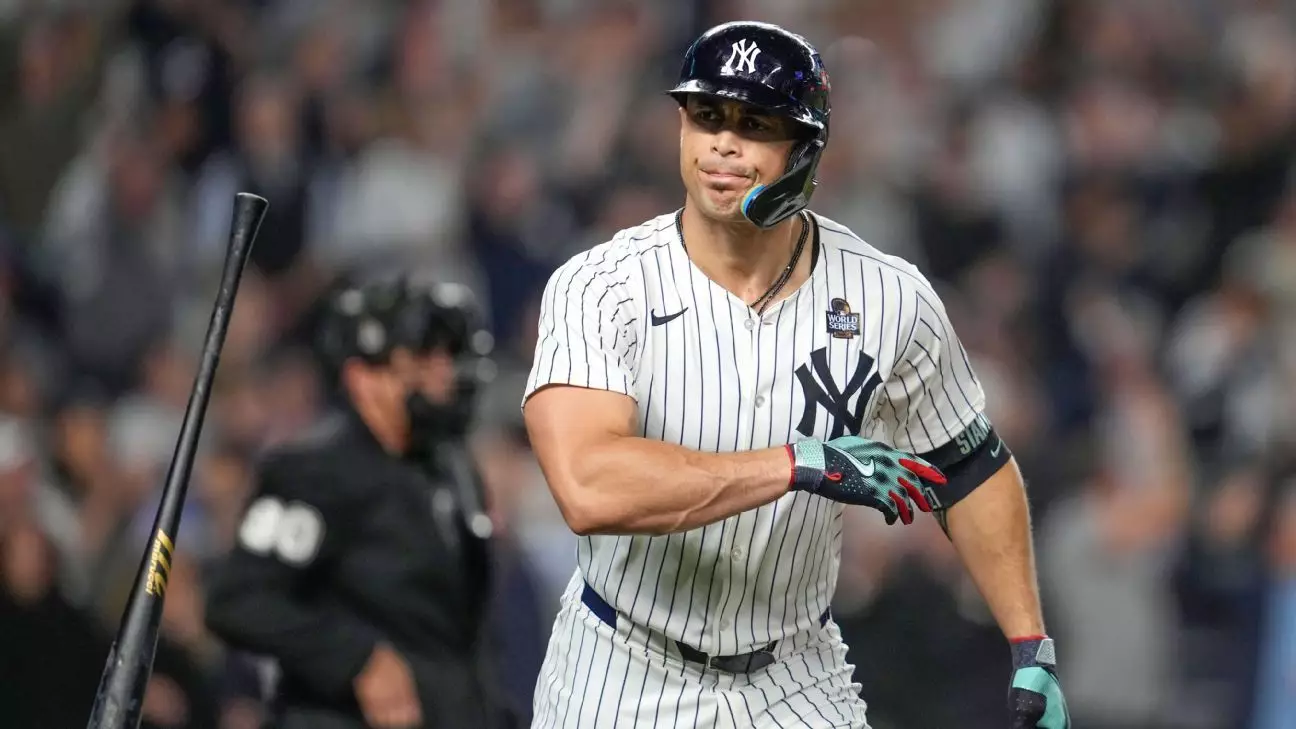New York Yankees designated hitter Giancarlo Stanton is emerging from a challenging phase in his career, marked by persistent elbow tendinitis that sidelined him for a significant portion of the season. Just recently, Stanton took a pivotal step toward rejoining his team by participating in live batting practice at Yankee Stadium. The anticipation surrounding his return is palpable, not just among fans, but also within the team’s strategic framework as they navigate a season filled with its share of challenges. As Stanton confirmed his aspirations to return by the end of May, he is becoming both a symbol of perseverance and a restoration of the offensive power the Yankees desperately need.
The Significance of Batting Practice
Stanton’s batting practice was a moment of relief for the Yankees organization. It marked the first instance this year when he faced live pitching, highlighting not only a milestone in his recovery but also the psychological fortitude required to come back from injury. Although he faced only ten pitches, his ability to make contact—even if it resulted in a grounder and a walk—demonstrates a commitment to rebuilding his skills. It’s essential to understand the context of this practice session. After experiencing debilitating pain that forced him to halt all baseball activities earlier in the year, Stanton’s return to the batter’s box is a testament to his determination.
For many athletes, returning from injuries consists not just of physical readiness but mental readiness as well. Stanton’s reflections about having to “play through pain” are concerning yet grounded; they illustrate the gritty reality athletes face. His assertion that, “If I’m out there, I’m good enough to play,” is a double-edged sword. While it fosters a sense of self-reliance, it raises questions about how injuries can often be masked in the pursuit of performance.
A Cautionary Move by the Yankees
The decision to transition Stanton from the 15-day to the 60-day disabled list was procedural, yet it highlighted a series of tactical decisions the Yankees had to make amidst roster management complexities. By placing Stanton on the extended list, the Yankees not only created room for incoming players like Bryan De La Cruz but also protected their star slugger from rushing back into action before he was sufficiently healed. This tactical patience reflects a broader strategy surely informed by the team’s recent history with injuries, illustrating a learning curve that respects the player’s health over immediate performance.
Yankees manager Aaron Boone’s comments about Stanton’s rehab assignment also raise intriguing insights into how organizations assess player readiness. Booth suggested that Stanton may not need a lengthy rehab stint due to the unique nature of his role as a designated hitter. In many ways, this highlights a systemic shift in how teams view offensive players. The Yankees seem to agree that if Stanton can exhibit adequate performance during batting practice, they can proceed with confidence in his readiness.
Historical Context and Future Prospects
Stanton’s elbow issues have a storied history that extends beyond this season. Playing through pain during the previous postseason—where he remarkably hit seven home runs in just 14 games—provides a glimpse into his resilience. However, the question arises: how much should any player endure before health takes precedence? Stanton’s admission that season-ending surgery was once a possibility gives fans and analysts an essential perspective on the severity of his condition.
Despite the depth of his struggles, Stanton’s imminent return serves as a beacon of hope not only for the Yankees but also for fans who adore the thrill of live baseball. His presence in the lineup could reinvigorate a team looking to build momentum as they navigate the rigors of the MLB season. With the right balance of aggression and caution in returning, Stanton may help convert current challenges into revitalized team dynamics.
As Stanton prepares for his return, the entire Yankees organization must tread carefully, weighing the risks of hastiness against the rewards of a well-timed comeback. The path forward, though; may be fraught with ups and downs, embodies the quintessential sports narrative—one that celebrates resilience in the face of adversity.

